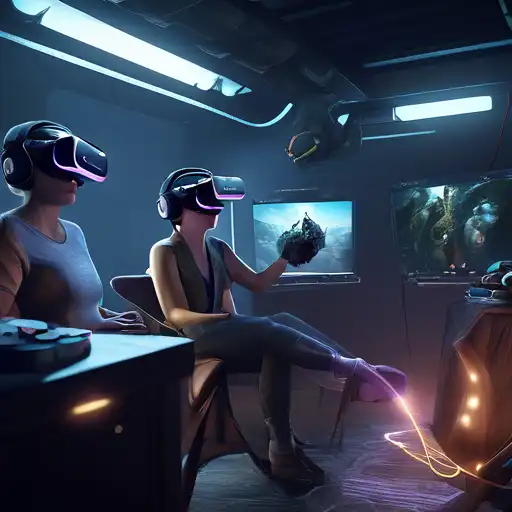Introduction to Virtual Reality
Virtual Reality (VR) has transformed the way we interact with digital content, offering unparalleled immersive experiences. From gaming to education, VR's applications are vast and varied. This guide will walk you through the essentials of creating captivating VR experiences that engage and astonish users.
Understanding VR Technology
Before diving into creation, it's crucial to understand the technology behind VR. VR headsets, such as the Oculus Rift and HTC Vive, provide the visual and auditory foundation, while motion tracking and hand controllers add interactivity. Knowing your hardware is the first step toward crafting immersive experiences.
Designing for Immersion
Immersion is the cornerstone of VR. To achieve it, focus on high-quality graphics, realistic sound design, and intuitive user interfaces. Environments should be detailed and interactive, encouraging users to explore. Remember, the goal is to make users forget they're in a virtual world.
Key Elements of Immersive Design
- High-resolution textures and models
- Dynamic lighting and shadows
- 3D spatial audio
- Responsive and natural user interactions
Developing VR Content
With the design in place, the next step is development. Platforms like Unity and Unreal Engine offer robust tools for VR development. Start by prototyping your ideas, then refine based on user feedback. Performance optimization is also critical to ensure smooth experiences across all devices.
Tools and Platforms
- Unity: Ideal for beginners and professionals alike
- Unreal Engine: Best for high-fidelity graphics
- Blender: For creating custom 3D models
- Audacity: For editing and creating sound effects
Testing and Iteration
Testing is an ongoing process in VR development. Gather feedback from a diverse group of users to identify issues and areas for improvement. Iteration is key to refining the experience and ensuring it meets your audience's expectations.
Publishing and Distribution
Once your VR experience is polished, consider platforms for distribution. The Oculus Store, SteamVR, and Viveport are popular choices. Marketing your VR experience effectively is also crucial to reach your target audience.
Conclusion
Creating immersive VR experiences is a complex but rewarding process. By understanding the technology, focusing on immersive design, and iterating based on feedback, you can craft experiences that captivate and engage. The future of VR is bright, and with the right approach, you can be a part of shaping it.
For more insights into VR development, check out our guide on VR development tools.
